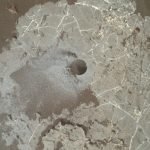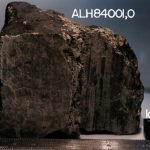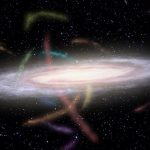This tiny Saturn moon could have an ocean inside
A Southwest Research Institute scientist set out to prove that the tiny, innermost moon of Saturn was a frozen inert satellite and instead discovered...
Scientists find the “heart” of the Milky Way galaxy
New study finds mass at the center of the Milky Way is 99.9% from a supermassive black hole.
At the center of the Milky Way...
Newly discovered carbon may yield clues to ancient Mars
NASA's Curiosity rover landed on Mars on Aug. 6, 2012, and since then has roamed Gale Crater taking samples and sending the results back...
Organic molecules found in this Martian meteorite are not from the Earth, shows study
Organic molecules found in a meteorite that hurtled to Earth from Mars were synthesized during interactions between water and rocks that occurred on the...
Slushy magma ocean helped form the Moon’s crust, shows study
Scientists have shown how the freezing of a ‘slushy’ ocean of magma may be responsible for the composition of the Moon’s crust.
The scientists, from...
Scientists report the second supermoon beyond our solar system
Astronomers have reported a second, super-sized moon orbiting a Jupiter-sized planet beyond our solar system.
If confirmed, the sighting could mean that exomoons are as...
Scientists find three planets that will be swallowed by their stars
Astronomers recently discovered three planets orbiting dangerously close to stars nearing the ends of their lives.
Out of the thousands of extrasolar planets found so...
How the Milky Way ‘ate’ smaller star clusters and galaxies
Astronomers are one step closer to revealing dark matter enveloping our Milky Way galaxy, thanks to a new map of twelve streams of stars...
Scientists find potential clue to reionization of universe
About 400,000 years after the universe was created began a period called "The Epoch of Reionization."
During this time, the once hotter universe began to...
Scientists find an eccentric exoplanet
“Red dwarfs” are small stars and thus much cooler than our Sun.
Around stars like these, liquid water is possible on planets much closer to...










